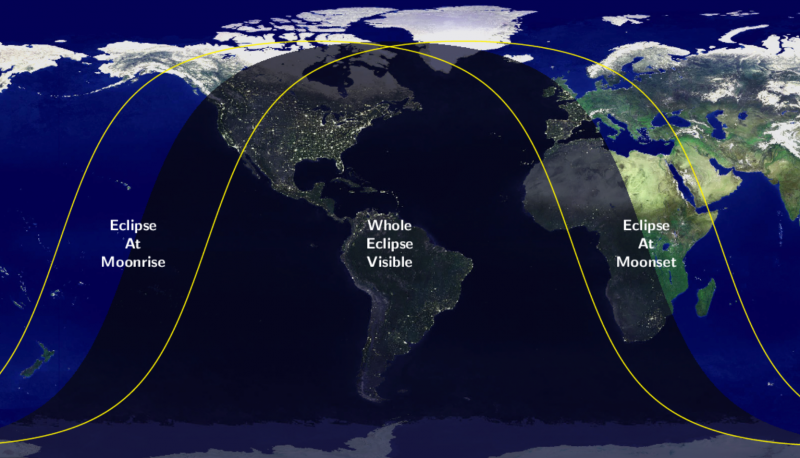
Total lunar eclipse
People in the Americas, Europe and Africa will see the total lunar eclipse during the night of May 15-16, 2022. Plus, on this night, the moon is close: a supermoon.
Penumbral eclipse begins at 1:32 UTC on May 16 (9:32 p.m. EDT on May 15).
Partial eclipse begins at 2:27 UTC on May 16 (10:27 p.m. EDT on May 15).
Totality begins (moon engulfed in Earth’s shadow) at 3:29 UTC on May 16 (11:29 p.m. EDT on May 15).
Totality ends at 4:53 UTC on May 16 (12:53 a.m. EDT).
Partial eclipse ends at 5:55 UTC on May 16 (1:55 a.m. EDT).
Penumbral eclipse ends at 6:50 UTC on May 16 (2:50 a.m. EDT).
Maximum eclipse is at 4:12 UTC on May 16 (12:12 a.m. EDT).
Duration of totality: About 90 minutes.
Note: This total eclipse is central. That means the moon passes centrally through the axis of Earth’s dark (umbral) shadow. The moon is in a near part of its orbit – close to Earth – during the eclipse. It’s a supermoon.
See photos of the lunar eclipse from EarthSky’s community!
Visit Timeanddate.com to get an exact timing of the eclipse from your location.
Because they are so deep, central eclipses typically have the longest total phases. In this case, the duration of totality lasts nearly 90 minutes!
A full moon is up only at night. And a total lunar eclipse can be seen from all of Earth that is experiencing night while the eclipse is taking place. But some will see the eclipse better than others, depending on location. Some will see it at moonrise or moonset, when the moon is low in the sky. Lunar eclipses are safe to view with the unaided eye. Binoculars and telescopes enhance the view, but aren’t required.
Read: May’s full moon is the Flower Moon
Moon, constellation, Saros
This lunar eclipse takes place 1.5 days before the moon reaches perigee, its closest point to Earth for the month. So this full moon is a supermoon. That means, during this eclipse, the moon appears relatively large in our sky.
During the May 15-16 eclipse, the moon is located in the direction of the constellation Libra.
The eclipse belongs to Saros 131 in the catalog of lunar eclipses. It is number 34 of 72 eclipses in the series. All eclipses in this series occur at the moon’s descending node. The moon moves northward with respect to the node with each succeeding eclipse in the series.
Expect higher-than-usual tides, following this eclipse
The May full moon is a supermoon, closest to the Earth for May just 1.5 days before the eclipse takes place. Thus, in the day or two after the eclipse, people who live along a coastline can expect higher-than-usual tides.
Some call this sort of tide perigean spring tides. But in recent years, since close new or full moons have come to be called supermoons, the extra high tides they bring are sometimes called supermoon tides. Some also favor the term king tides.
The path of the moon during the eclipse
Find the moon’s path with respect to Earth’s umbral and penumbral shadows below.
Visit Timeanddate.com to get an exact timing of the eclipse from your location.
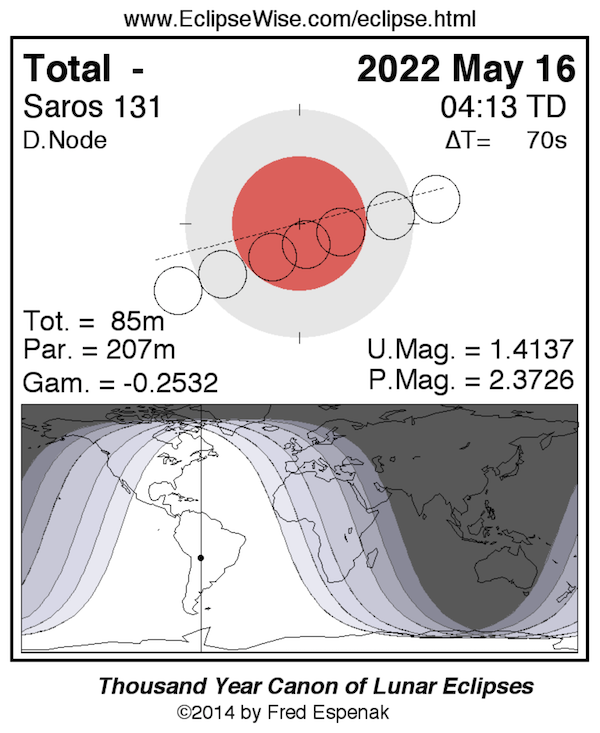
Last and next eclipses, and eclipse seasons
The total lunar eclipse of May 16, 2022, is preceded two weeks earlier by a partial solar eclipse on April 30, 2022. These two eclipses take place within a single eclipse season.
An eclipse season is an approximate 35-day period during which it’s inevitable for at least two (and possibly three) eclipses to take place.
The October-November 2022 eclipse season will feature a partial solar eclipse on October 25 and a total lunar eclipse on November 7-8.
Maps and data for the total lunar eclipse
- Saros 131 Table: date for all eclipses in the Saros series
- Visual Appearance of Lunar Eclipses
- Danjon Scale of Lunar Eclipse Brightness
- Eclipse map and animation
Visit Timeanddate.com to get an exact timing of the eclipse from your location.
Lunar eclipse photos from our EarthSky community
Submit your photo to EarthSky here.
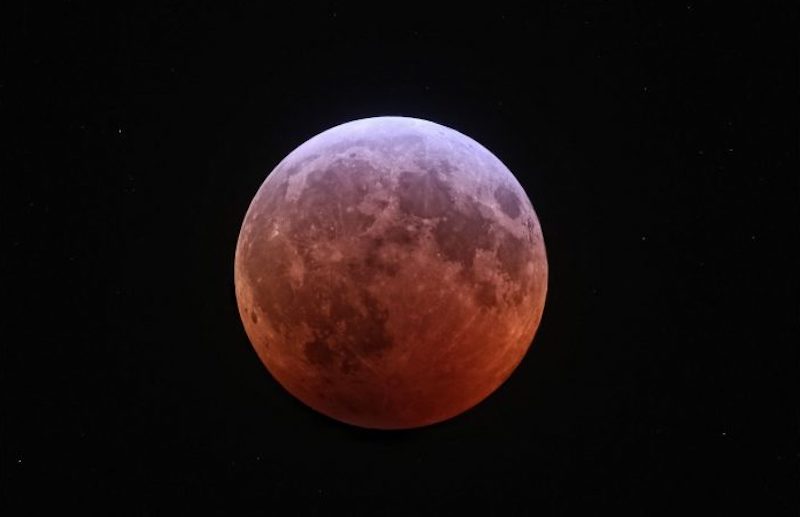
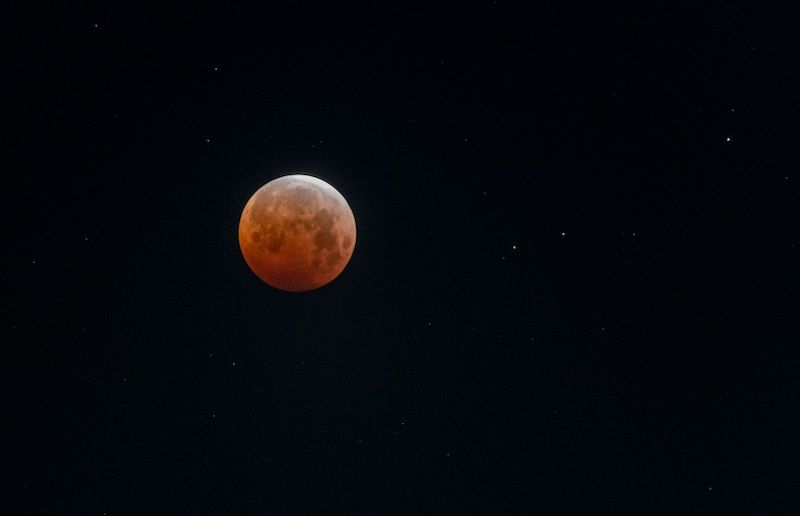
More resources
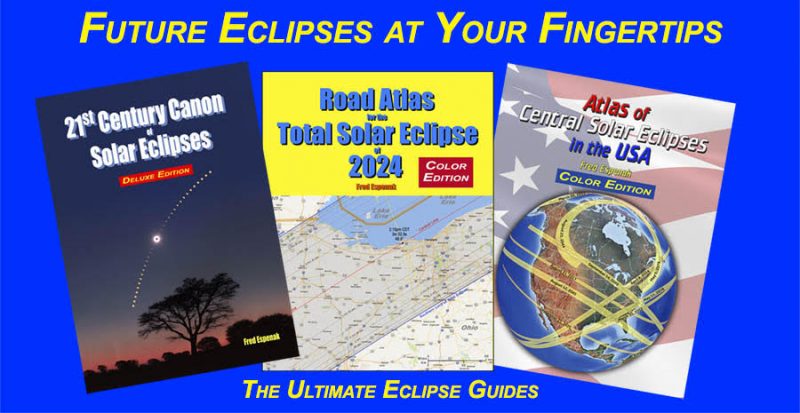
Bottom line: A 90-minute total lunar eclipse happens on Sunday, May 15-16, 2022. It’s seen across much of Earth, best from the Americas and western Africa.
Visit Timeanddate.com to get an exact timing of the eclipse from your location.
Read more from EarthSky: Tides, and the pull of the moon and sun
See photos of the November 2021 lunar eclipse
EarthSky’s monthly night sky guide: Visible planets and more











